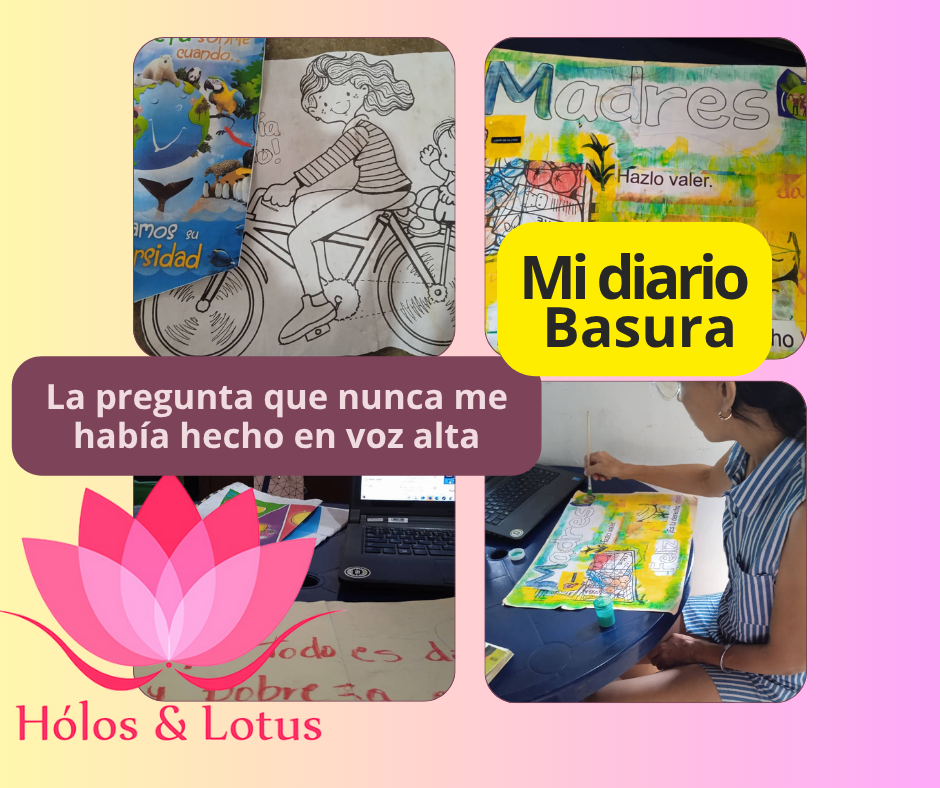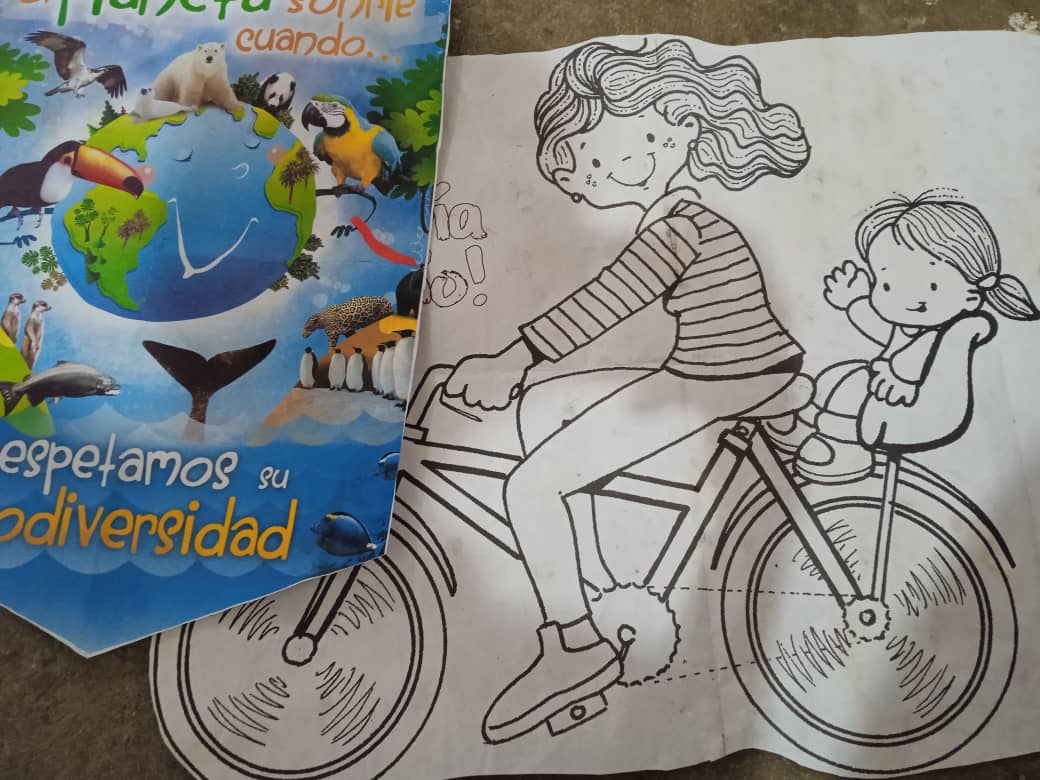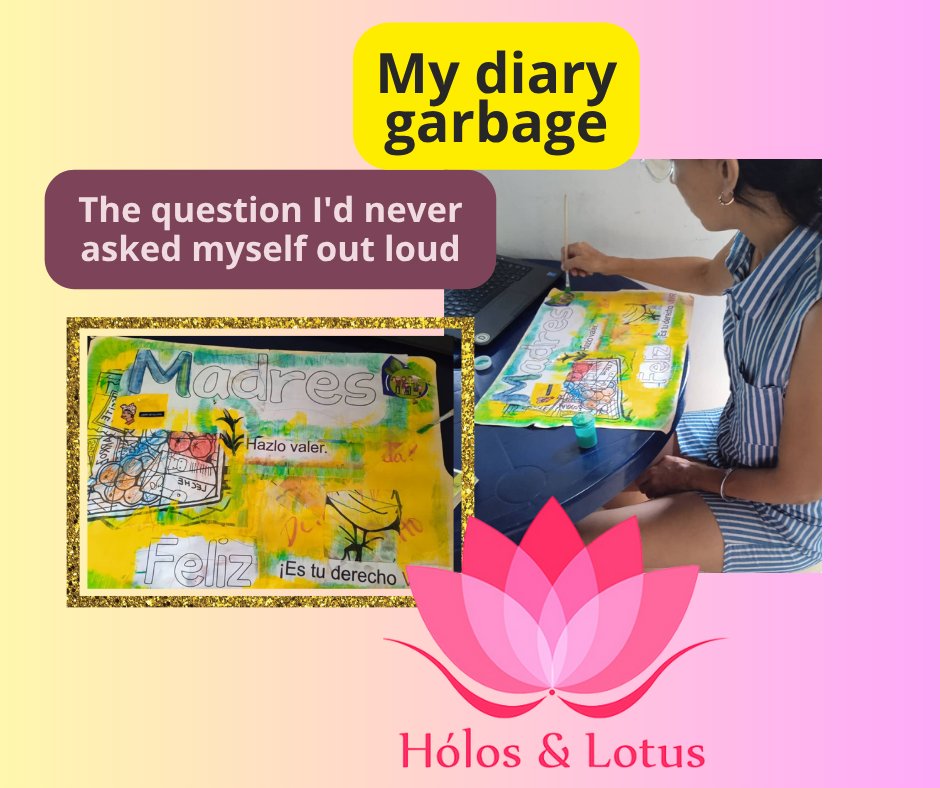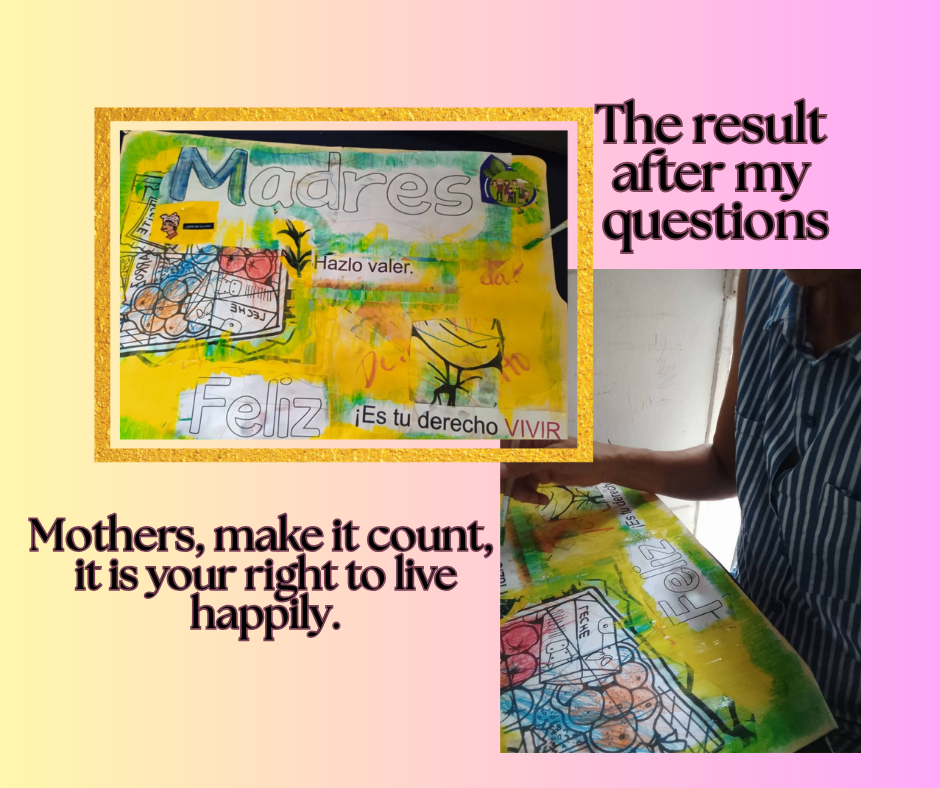
Hoy me han invitado a hacer algo inusual, a hurgar en la basura para crear mi diario. Sin embargo, desde esta invitación, me han contado que en el mundo de la creatividad y del bienestar emocional, la palabra basura puede abrirnos una puerta inesperada hacia la transformación.
Después de pensar en iniciar y posponer varias veces, finalmente me animé a realizar este ejercicio propuesto por @esperanzalandia al cual me invito @miriannalis les comparto el post original para que se animen a participar y explorar en sus diarios basura:
Debo confesar que al principio no fue nada fácil. Aunque en apariencia se trataba solo de escoger materiales reciclados y poner manos a la obra, me descubrí pensando demasiado, dudando en qué usar y qué dejar de lado.
Mi experiencia personal: La pregunta que nunca me había hecho en voz alta
Miré alrededor y recordé que, en medio de tantas mudanzas de los últimos años, la mayoría de mis materiales de maestra se habían dañado: revistas, cuadernos, carteles, libros, pinturas, juegos lúdicos. Lo que tanto cuidé por mucho tiempo, poco a poco se fue deteriorando con el tiempo, la humedad, el polvo y hasta una gotera inoportuna en cada mudanza.
Sin embargo, entre esas cosas que alguna vez significaron tanto para mí y que hoy ya estaban en el lado de, cosas a revisar y votar, quedaba mi pequeña colección de revistas educativas que adoraba, las famosas maestra jardinera, que por cierto ahora no puedo adquirir. Eran parte de mi identidad como maestra, y aunque ya estaban viejas y manchadas, decidí que ese sería el material perfecto para iniciar mi diario basura. Inclusive pude rescatar unos afiches.

Logré conseguir estos afiches que aún me sirven y puedo restaurar. Perdí el rastro de donde venden actualmente las revista, Maestra Jardinera.
Tomé una carpeta amarilla, también desgastada, y la usé como base. Allí escribí una pregunta profunda, una que nunca antes me había atrevido a formularme en voz alta, pero que reconocía como parte de mi historia y de las mujeres de mi familia. Fue un momento íntimo y hasta doloroso. Sin embargo, cuando comencé a pegar recortes, pinturas secas y palabras que resonaban conmigo, algo empezó a cambiar.
Lo que en un inicio parecía solo un collage desordenado se convirtió en una página viva de mi propia historia. Cada fragmento pegado era un símbolo de algo que había perdido, pero también de lo que permanecía en mí, además esa pregunta dolorosa del inicio, recibió algunas respuestas en medio de frases y recortes.
La pregunta fue: ¿Por qué las mujeres de mi familia o linaje hemos sufrido tanto, porque tanto llanto, sin un amor verdadero, dolor, y pobreza en nuestras vidas?
Al pasar de los días, Mi diario parecía un espejo para el inconsciente
Muchas veces creemos que nuestras emociones y pensamientos deben expresarse con claridad lógica. Pero la experiencia demuestra lo contrario: a veces, lo que no logramos explicar con frases, surge naturalmente cuando jugamos con materiales simples, esto es lo que me ha sucedido con este ejercicio.
Lo que más me agrado y en cierto momento me incomodo, es que no son respuestas impuestas por alguien más, ni consejos externos que suenan lejanos. Son intuiciones y verdades descubiertas en el proceso, que nos devuelven la sensación de libertad y seguridad.
¿Ves respuestas a mi pregunta en mi diario basura? Yo interprete algunas cosas.
Gracias por leerme hasta el final y seguirme en este ejercicio.
Imágenes de mi propiedad tomadas con mi Redmi 10A, editadas en canvas


Today I was invited to do something unusual: rummage through the trash to create my junk journal. However, since this invitation, I've been told that in the world of creativity and emotional well-being, the word "trash" can open an unexpected door to transformation.
After thinking about starting it and postponing it several times, I finally decided to try this exercise suggested by @esperanzalandia, to which @miriannalis invited me. I'm sharing the original post with you so you're encouraged to participate and explore your junk journals:
I must confess that at first it wasn't easy. Although it seemed like it was just a matter of choosing recycled materials and getting started, I found myself overthinking, wondering what to use and what to leave out.
My Personal Experience: The Question I'd Never Asked Out Loud

I looked around and remembered that, amidst so many moves over the past few years, most of my teaching materials had been damaged: magazines, notebooks, posters, books, paints, games. Things I'd cared for so much for so long slowly deteriorated over time, with humidity, dust, and even an unwelcome leak with each move.
However, among those things that once meant so much to me and that were now on the "things to review and vote on" list, there was my small collection of educational magazines that I adored, the famous "Maestro Jardinera" magazines, which, by the way, I can't afford now. They were part of my identity as a teacher, and although they were old and stained, I decided they would be the perfect material to start my junk journal. I was even able to salvage some posters.
I took a yellow folder, also worn, and used it as a base. There I wrote a profound question, one I had never dared to ask myself out loud, but one that I recognized as part of my history and that of the women in my family. It was an intimate and even painful moment. However, when I began to paste clippings, dried paints, and words that resonated with me, something began to change.
What at first seemed like just a messy collage became a living page of my own story. Each glued fragment was a symbol of something I had lost, but also of what remained within me. That painful question from the beginning received some answers amidst phrases and clippings.
The question was: Why have the women of my family or lineage suffered so much, so much crying, without true love, pain, and poverty in our lives?
As the days passed, my diary seemed like a mirror to the unconscious.
We often believe that our emotions and thoughts should be expressed with logical clarity. But experience shows otherwise: sometimes, what we can't explain in phrases emerges naturally when we play with simple materials. This is what happened to me with this exercise.
What pleased me most, and at times made me uncomfortable, is that these aren't answers imposed by someone else, nor external advice that sounds distant. They are intuitions and truths discovered in the process, which restore a sense of freedom and security.
Do you see answers to my question in my junk diary? I interpreted some things.
Thank you for reading to the end and following along with me throughout this exercise.
Images my own, taken with my Redmi 10A. Edited on canvas